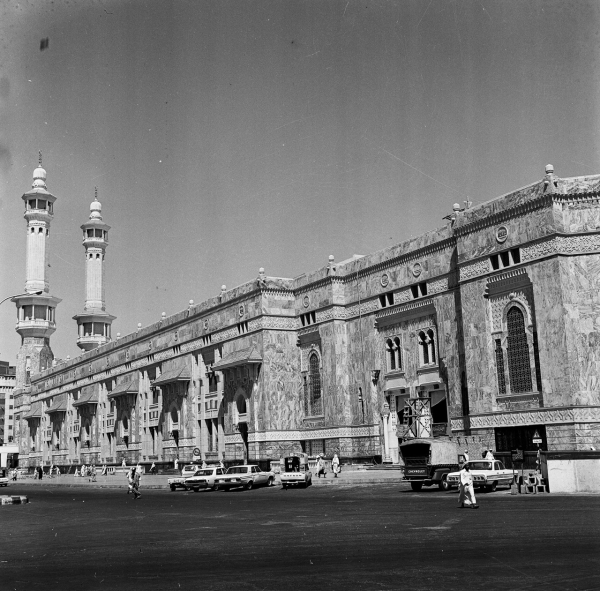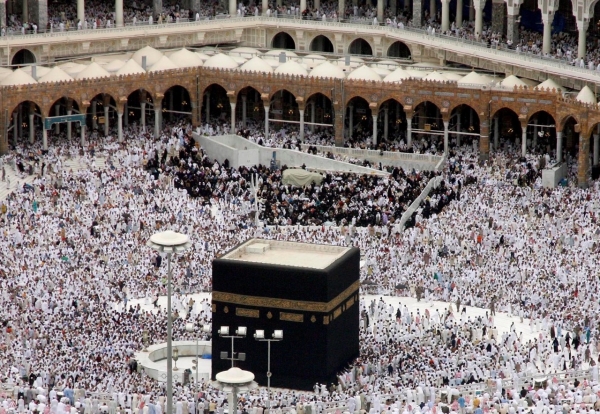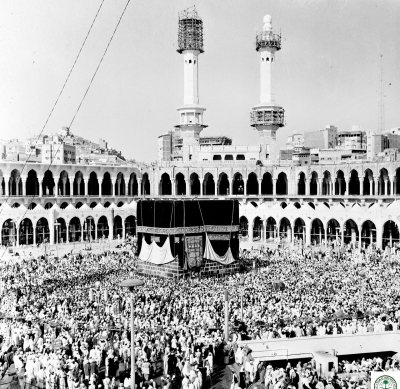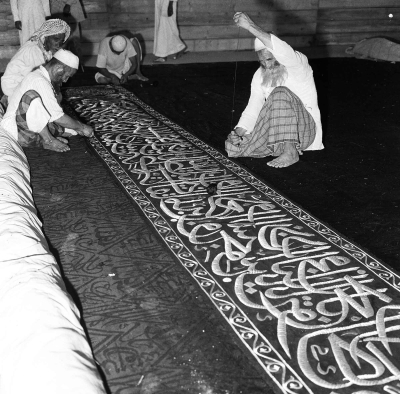



The First Saudi Expansion of the Grand Mosque encompasses the courtyards and structures added to the Grand Mosque in Makkah al-Mukarramah during the early years of the Saudi era, as well as the reforms within the Grand Mosque, such as its first electrification for full lighting, the assembly of worshipers behind a single imam, and the assignment of dedicated guards for the Black Stone. It was initiated by the Founding King Abdulaziz Bin Abdulrahman Al Saud during his reign, and was continued by his sons: King Saud Bin Abdulaziz, King Faisal Bin Abdulaziz, and King Khalid Bin Abdulaziz.
Results of the First Saudi Expansion of the Grand Mosque
In the First Saudi Expansion, the Grand Mosque's gates increased to sixty-four, with notable gates such as the King Abdulaziz Gate in the south, the Umrah Gate in the west, and al-Salam (Peace) Gate in the southeast. This expansion also involved the construction of seven minarets, each towering at a height of eighty-nine m, located near the gates of al-Safa, King Abdulaziz, Umrah, and al-Salam
Upon its finalization, the First Saudi Expansion covered an area of 160,168 m, capable of accommodating over three hundred thousand worshipers during regular periods and up to four hundred thousand during peak times.
The First Saudi Expansion of the Grand Mosque in Makkah al-Mukarramah began as King Abdulaziz entered the city. King Abdulaziz was the fifth to combine expansion and architecture in the history of the Two Holy Mosques, following the two Rashidun Caliphs Umar Bin al-Khattab and Uthman Bin Affan, Caliph al-Walid Bin Abd al-Malik in the era of the Umayyad state, and Caliph Mohammed al-Mahdi in the era of the Abbasid state.
Works before the First Saudi Expansion of the Grand Mosque
The First Saudi Expansion was preceded by several works, including assembling worshipers behind a single imam in 1924. Additionally, there were several renovations in 1925. In 1927, King Abdulaziz ordered the establishment of the first dedicated factory for the covering of al-Kabaa al-Musharrafa. He also paved the Mas'aa with granite stones and removed the congested shops surrounding it.
As part of the efforts of King Abdulaziz before ordering the First Saudi Expansion, the entire Grand Mosque was fully lighted with electric lights in 1928 and increased to one thousand lamps. In 1930, King Abdulaziz directed the purchase of a machine for generating electrical power.
The First Saudi Expansion of the Grand Mosque during the Reign of King Saud
In 1955, King Saud Bin Abdulaziz delivered his historic speech to commence the comprehensive expansion of the Grand Mosque, as directed by his father. The buildings of the Grand Mosque were raised to three floors, the Mas'aa was expanded with two levels, and the Mataf (circumambulation) area was enlarged.
In the First Saudi Expansion, the area of the Mas'aa was doubled by adding a second floor, building a structure specifically for Zamzam Water, setting up a pump to raise its water, equipping Zamzam with taps, and installing a used water duct. Additionally, al-Kaba al-Musharrafa underwent a thorough restoration that involved replacing the upper and lower ceilings and filling cracks in the walls.
The First Saudi Expansion of the Grand Mosque during the Reign of King Faisal
As part of the First Saudi Expansion during the reign of King Faisal Bin Abdulaziz, the structure surrounding Maqam Ibrahim was removed to allow for expansion in both directions. The Maqam was then covered with a glass dome in 1967. Additionally, during his reign, the library of the Grand Mosque was constructed. In 1978, the expansion of the Mataf area began.
The First Saudi Expansion of the Grand Mosque during the Reign of King Khalid
As a continuation of the accomplishments of the First Saudi Expansion, the door of al-Kaaba al-Musharrafa was replaced with a door from pure gold during the reign of King Khalid Bin Abdulaziz in 1979, incorporating 280 kg of pure gold. Bab al-Tawbah (the Door of Repentance), situated in the northeastern corner of al-Kaaba and accessed through Bab al-Salam (the Door of Peace), was also replaced.
Related quizzes

